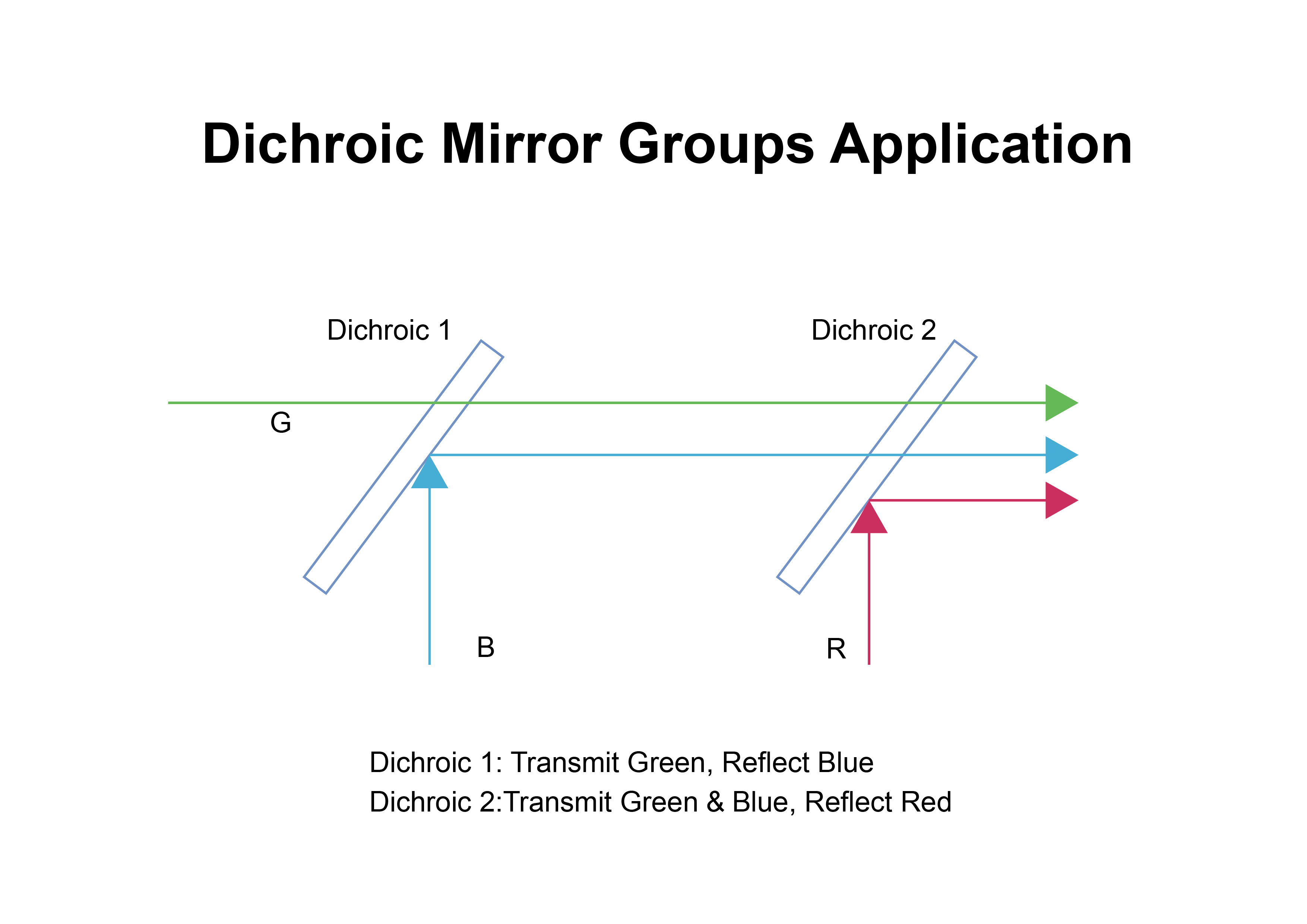Contents

Source: Shanghai Optics
Dichroic Mirrors: Properties and Applications
Introduction
A dichroic mirror, also known as a dual-band mirror or dichroic reflector, exhibits different reflection or transmission properties at two distinct wavelengths or wavelength regions. These mirrors are commonly used in various optical applications due to their unique optical characteristics.
Properties of Dichroic Mirrors
Dichroic mirrors are designed to have specific reflection and transmission properties at different wavelengths. They are often utilized in laser systems, microscopy, and spectroscopy applications. Some mirrors, known as trichroic mirrors, have tailored optical properties at three different wavelengths.
Applications of Dichroic Mirrors
Dichroic mirrors find applications in a wide range of optical systems:
- Diode-pumped lasers
- Laser frequency doubling
- External frequency doubling
- Laser microscopy
- Spectroscopy
Design and Fabrication
Most dichroic mirrors are dielectric mirrors, fabricated using techniques such as electron beam deposition or ion beam sputtering. The design of these mirrors involves complex layer structures to achieve the desired optical properties. The reflection spectrum of a dichroic mirror depends on factors like angle of incidence and polarization of the input light.
Short-pass and Long-pass Mirrors
In optics, short-pass and long-pass mirrors refer to mirrors with high transmittance at short wavelengths and long wavelengths, respectively. Designing mirrors with close transition wavelengths requires sophisticated designs and precise fabrication techniques.
Alternative Approaches
In cases where achieving high transmissivity and reflectivity at close wavelengths is challenging, polarization-based approaches can be used to differentiate between the wavelengths of interest.
Conclusion
Dichroic mirrors play a crucial role in various optical systems by selectively reflecting or transmitting light at different wavelengths. Their unique properties make them essential components in lasers, microscopy, and spectroscopy, enabling a wide range of applications in photonics and optics.

Source: Mindsparkle Mag
Feel free to comment your thoughts.



